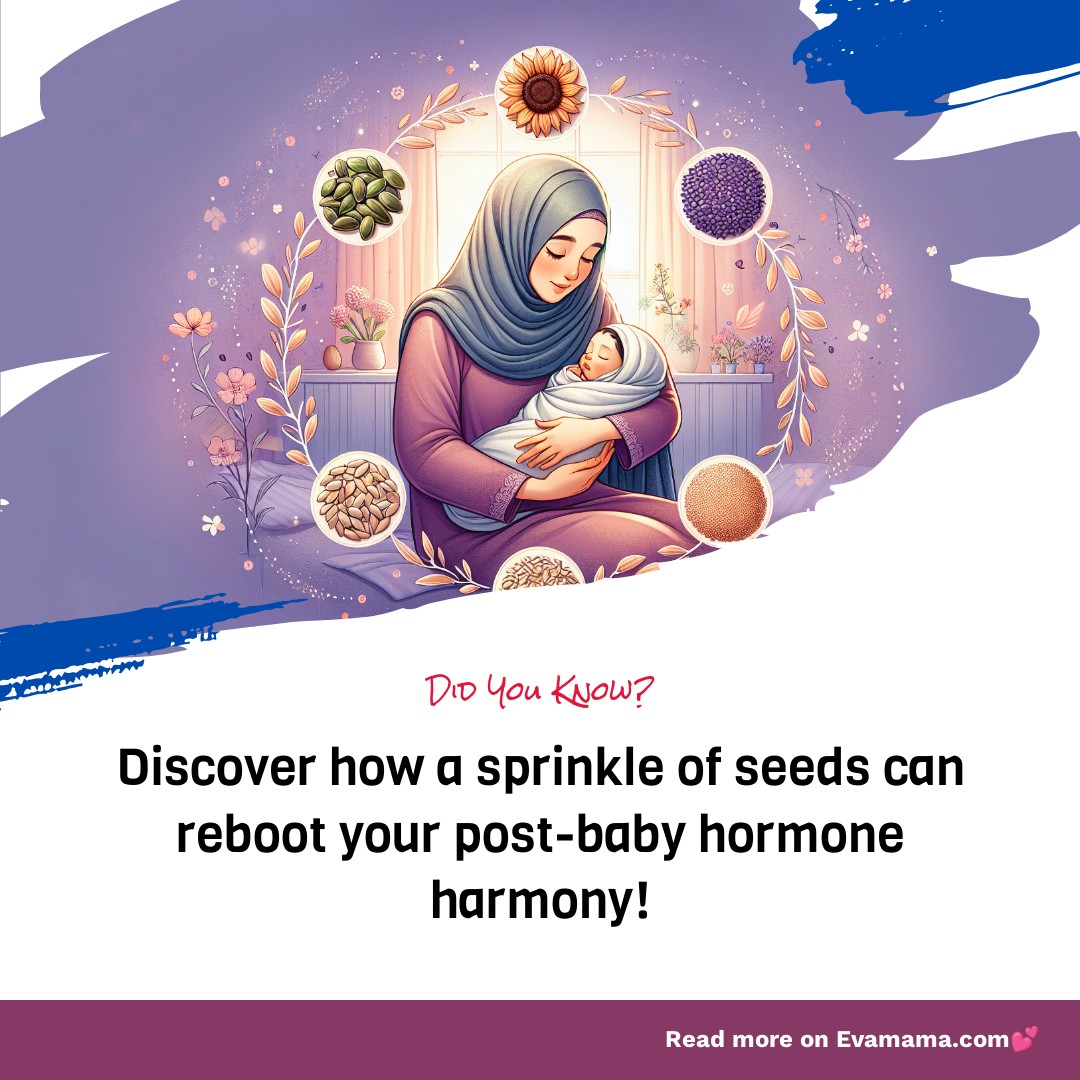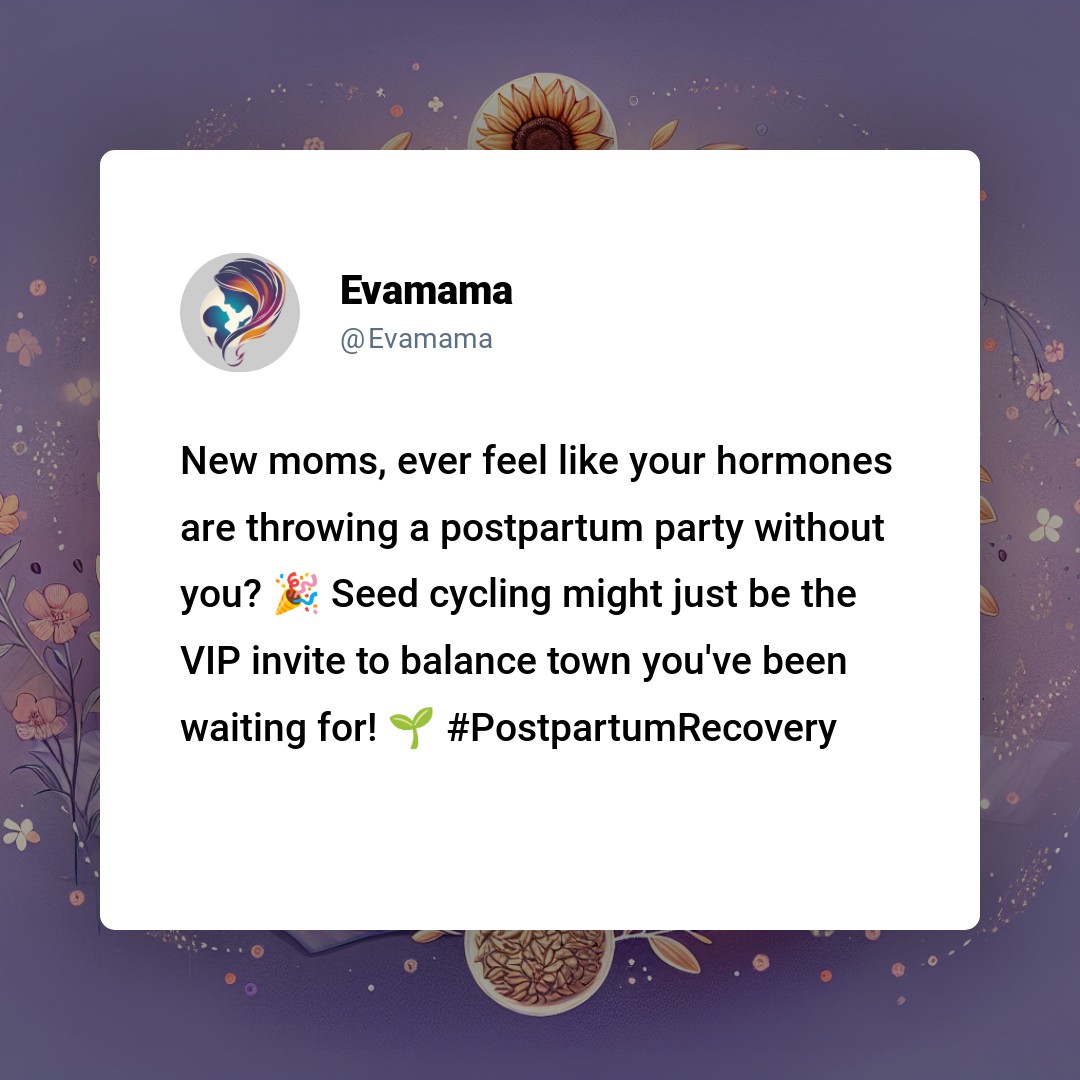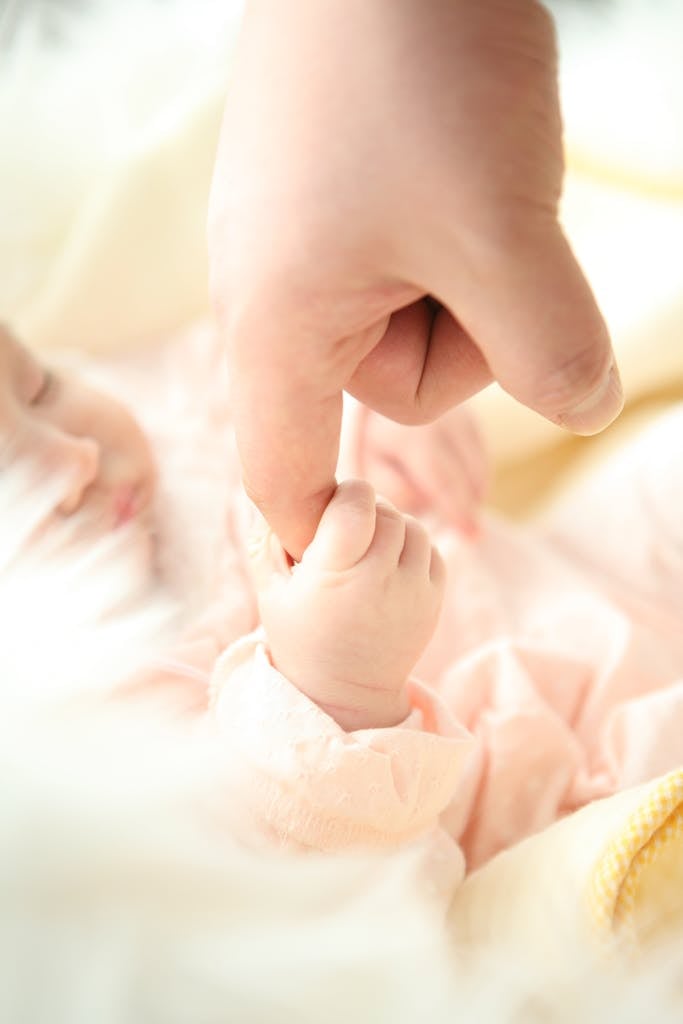Seed Cycling for Postpartum Recovery: Unlock Natural Hormone Balance
What Is Seed Cycling & How Can It Aid Postpartum Recovery?
Seed cycling can be a natural path to hormonal balance postpartum. Imagine you’re riding the hormonal roller coaster after welcoming your little one into the world, and you’re desperate for something—anything—to smooth out the ride.
This is where the simple power of seeds comes into play, a natural approach whispered among mothers as a secret handshake to wellness. With a sprinkle of flax here and a dash of pumpkin there, I’ve seen the subtle yet profound impact it can have on a body seeking equilibrium.
Let’s sift through the seed mix together, uncovering how these tiny kernels might just be the gentle nudge your body needs to find its rhythm again.

Understanding the Menstrual Cycle Postpartum
The menstrual cycle is a symphony of hormones, and after childbirth, it’s like the orchestra is finding its tune again. Estrogen and progesterone, the lead instruments in this symphony, play needed roles in your postpartum recovery. They need to be in harmony for you to feel your best.
The Role of Estrogen and Progesterone in Recovery
Estrogen and progesterone levels can be quite erratic after you’ve had a baby. You might experience mood swings, irregular periods, or even hair loss. It’s all part of the postpartum journey. Seed cycling aims to naturally modulate these hormone levels, potentially easing you into a more balanced state.
The Seed Cycling Method: A Natural Approach to Hormonal Balance
Imagine rotating specific seeds in your diet according to the phases of your menstrual cycle. Flax and pumpkin seeds during the first half, sunflower and sesame seeds during the second. Each seed brings a unique blend of nutrients believed to support the corresponding hormonal shifts.
Nutritional Powerhouses for Hormonal Health
Seeds are tiny but mighty. They’re packed with lignans and key fatty acids, which are thought to help bind excess hormones or provide the building blocks for hormone production. Integrating these into your diet could be a game-changer for your postpartum body.
Seed Cycling Schedule: Timing Is Everything
To run faster, you have to train. To balance hormones, you have to cycle seeds with precision. From day 1 to 14 of your cycle, flax and pumpkin seeds take the stage. From day 15 to 28, it’s time for sunflower and sesame seeds to shine. It’s all about the timing.
Real Moms, Real Stories: Seed Cycling Successes
You’re not alone in this. Many moms have turned to seed cycling and noticed changes. Some say their moods have improved, others have seen a return to regular cycles sooner than expected. These anecdotes add a layer of real-life experience to the science.
How to Incorporate Seed Cycling Into Your Diet
You might be thinking, “This sounds great, but how do I actually do it?” It’s simpler than you might think. Sprinkle ground seeds on your yogurt, blend them into smoothies, or bake them into your muffins. The key is consistency and making it a part of your daily routine.
The Evidence: What Research Says About Seed Cycling
While seed cycling is rooted in naturopathic tradition, scientific research on its effectiveness is still emerging. However, the nutritional benefits of seeds are well-documented, and their potential role in hormonal balance is a promising area of study.
A Table of Seeds and Their Benefits
| Phase of Cycle | Seeds to Use | Nutrients | Potential Benefits |
|---|---|---|---|
| Follicular (Days 1-14) | Flax, Pumpkin | Omega-3s, Zinc | Support estrogen production |
| Luteal (Days 15-28) | Sunflower, Sesame | Vitamin E, Selenium | Support progesterone production |
Seed Cycling: A Piece of the Postpartum Puzzle
Starting Your Seed Cycling Journey
To run faster, you have to lace up your shoes. To start seed cycling, you just need to reach for the seeds. Begin with small steps, track your cycle, and listen to your body. It’s a personal journey, and you’re in the driver’s seat.
Seed cycling for postpartum recovery is about finding balance in a natural, gentle way. It’s about nurturing your body with the nutritional components it needs to potentially support hormonal health. As you plunge into this journey, And so that every mom’s experience is unique, and what works for one may not work for another. But with seed cycling, you’re giving your body a chance to find its rhythm again, naturally.
Practical Guide to Implementing Seed Cycling During Postpartum

Understanding Seed Cycling: A Natural Approach to Hormonal Balance
You’ve probably heard about seed cycling, a natural method that involves consuming specific seeds during different phases of your menstrual cycle. It’s said to help balance hormones, which can be particularly beneficial during the postpartum period when your body is readjusting.
The Follicular Phase: Seeds to Support Estrogen Production
During the first half of your cycle, the follicular phase, your body needs nutrients that support estrogen production. Flaxseeds and pumpkin seeds are your go-to seeds here. Aim for one tablespoon of each per day. Grind them fresh to enhance absorption and sprinkle them on your morning oatmeal or blend them into a smoothie.
The Luteal Phase: Boosting Progesterone with Seeds
As you enter the luteal phase, the focus shifts to boosting progesterone. This is where sesame seeds and sunflower seeds come into play. Again, one tablespoon of each, ground for better digestion, can be easily incorporated into your diet. Try them in homemade energy balls or as a salad topping.
Seed Cycling Made Simple: A Weekly Plan
Let’s break it down into a weekly plan. Here’s a table to help you track your seed cycling routine:
| Week 1-2 (Follicular Phase) | Week 3-4 (Luteal Phase) |
|---|---|
| 1 tbsp ground flaxseeds | 1 tbsp ground sesame seeds |
| 1 tbsp ground pumpkin seeds | 1 tbsp ground sunflower seeds |
Addressing Postpartum Concerns: Irregular Periods and PMS
Post-birth, it’s common to experience irregular periods or PMS symptoms. Seed cycling can be a gentle way to encourage your body’s natural rhythm.
The Role of Diet in Seed Cycling
To optimize the benefits of seed cycling, pair it with a balanced diet rich in fruits, vegetables, and whole grains. Nutrient-dense foods enhance the seeds’ properties and support Also postpartum recovery.
Patience and Consistency: The Virtues of Seed Cycling
Patience is required. Hormonal balance doesn’t happen overnight. Stick with seed cycling for at least three months before assessing its impact on your postpartum healing journey.
Real Moms, Real Stories: Seed Cycling Success
Many new moms have shared their positive experiences with seed cycling. From reduced hair loss to improved mood, the anecdotes are encouraging. While not a panacea, seed cycling is a piece of the larger puzzle of postpartum wellness.
Seed Cycling: A Complement to Your Postpartum Care
Consider seed cycling as a complement to your postpartum care routine. It’s not a substitute for medical advice, but an additional tool to support your body’s natural processes.
Embracing Natural Methods: The Empowerment of Choice
By choosing to try seed cycling, you’re taking an active role in your postpartum recovery. It’s empowering to spell out natural methods that align with your body’s needs.
You’re not alone on this journey. There’s a community of moms exploring and sharing their experiences with natural postpartum recovery methods like seed cycling. Welcome to the circle of support.







